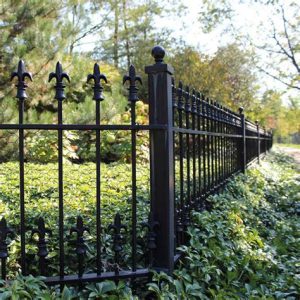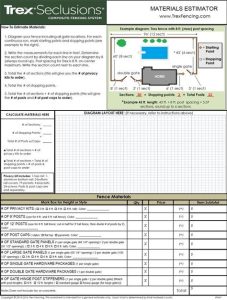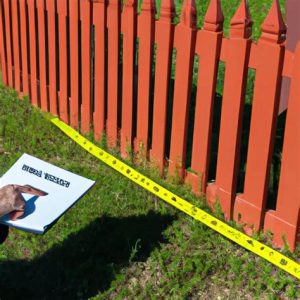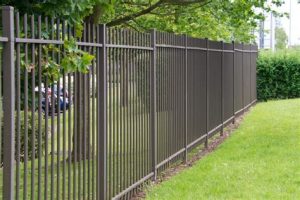Discover common pitfalls in the permit application process, from incomplete submissions to lacking neighbor consent, and learn how to avoid them.Navigating the fence permit process can be a daunting task for homeowners. While adding a fence can enhance your property’s aesthetics and security, the permitting journey is fraught with potential pitfalls that can lead to delays, frustrations, and even fines. From submitting an incomplete permit application to overlooking vital local regulations, many individuals unwittingly stumble into these common traps. Additionally, misunderstandings regarding property lines and the importance of neighbor consent can complicate matters further. This blog post will explore these pitfalls in depth, providing you with the insights needed to ensure a smooth and successful fence permitting experience. Let’s dive in and arm ourselves with the knowledge to avoid these common missteps!
Incomplete permit application
One of the most common pitfalls in the fence permit process is the incomplete permit application. When homeowners decide to install a fence, they often overlook the importance of providing all the necessary information in their permit application. This oversight can lead to delays and even denials of the permit.
- Accurate property dimensions
- Details about the proposed fence materials
- Construction plans or drawings
- Information regarding the property’s zoning
Failure to include any of these components can result in an incomplete permit application, forcing the applicant to resubmit their application, which can significantly extend the project timeline.
Lack of property line knowledge
When embarking on the journey to build a fence, one of the most crucial elements to consider is the property line. A lack of property line knowledge can lead to a myriad of issues that may not just delay your project but could also result in legal disputes with your neighbors.
Understanding where your property begins and ends is vital before you submit any permit applications. Fencing that encroaches on someone else’s land can lead to the need for costly adjustments and repairs, and a potential lawsuit if the neighboring property owner decides to take action. It’s advisable to have a land survey conducted to accurately define your boundaries. This will provide clear documentation that can be submitted with your permit application.
Additionally, engaging with your neighbors about your intended fencing project is a good practice. They should be informed about where the fence will be placed and the reasons behind that choice. This open communication can prevent misunderstandings and foster a more cooperative neighborhood environment.
Ignorance of local regulations
One of the most common pitfalls in the fence permit process is ignorance of local regulations. Many homeowners are excited about building a fence, but they often neglect to familiarize themselves with the specific rules that govern such projects in their municipality. Local regulations can dictate various aspects of fence construction, including height, material, placement, and even aesthetic considerations.
To avoid potential fines or the need to remove a non-compliant fence, it is crucial to conduct thorough research. Municipalities often have detailed zoning laws and building codes that outline what is permissible. For instance, some neighborhoods may have restrictions on the type of materials that can be used, while others may stipulate the minimum distance a fence must be from property lines or public sidewalks.
Additionally, engaging with local authorities or community boards can provide valuable insight. Many towns have resources available that can help you understand the local regulations related to fencing.
Missing necessary documentation
One of the most common issues that arise during the fence permit process is the missing necessary documentation. This can lead to significant delays, additional costs, and even rejection of your permit application. It is crucial to ensure that all required documents are submitted with your application.
- Completed permit application form
- Property description and plot plan
- Construction plans and specifications
- proof of ownership or authorization
Before submitting your application, it’s a good idea to double-check that you have all the necessary documentation. Failing to include any required documents can halt the process, leading to frustration and potentially costing you more time and money.
Failure to obtain neighbor consent
One of the most common pitfalls in the fence permit process is the failure to obtain neighbor consent. Many homeowners overlook the importance of discussing their fencing plans with neighbors. This oversight can lead to disputes and even delays in the permit approval process.
It’s vital to remember that building a fence can affect your neighbor’s property as well, particularly in terms of aesthetics and boundary lines. Engaging in open communication with your neighbors not only fosters good relationships but also ensures that everyone is on the same page regarding the fence installation. In some areas, local regulations even mandate that you secure consent from adjacent property owners before proceeding with the permit application.
To avoid complications, consider creating a checklist to document conversations with your neighbors.
| Neighbor’s Name | Date of Discussion | Consent Given (Yes/No) |
|---|---|---|
| [Neighbor 1] | [Date] | [Yes/No] |
| [Neighbor 2] | [Date] | [Yes/No] |
By obtaining clear consent and maintaining a record, you can significantly reduce the risk of encountering issues later on in the permit process. Remember, good communication is key to a smooth transition from planning to installation!
Frequently Asked Questions
What are the main reasons for delays in the fence permit process?
Delays often occur due to incomplete applications, lack of proper documentation, or miscommunication with local authorities.
How can homeowners ensure their fence complies with local regulations?
Homeowners should research local zoning laws, consult with their local planning department, and review any homeowners’ association guidelines before applying for a fence permit.
What common mistakes do people make when filling out a fence permit application?
Common mistakes include providing inaccurate property lines, neglecting to mention adjacent structures, or failing to include necessary plans and drawings.
Are there specific materials or designs that are more likely to be approved?
Yes, some jurisdictions have guidelines or restrictions on fence materials and designs. Generally, residential fences that are common and meet aesthetic standards are more likely to be approved.
What is the importance of notifying neighbors about a fence installation?
Notifying neighbors is crucial as it helps avoid disputes, ensures compliance with property line requirements, and fosters good relationships within the community.
How long does the fence permit approval process typically take?
The approval process can vary widely, ranging from a few days to several weeks, depending on the local government’s efficiency and the complexity of the application.
What steps should be taken if a fence permit is denied?
If a permit is denied, homeowners should review the reasons for denial, consult with the local permitting office for clarification, and consider making adjustments to the application or design before resubmitting.





